Home → Land Resources → Programs → Watershed → Materials
Manuals and Guides to Reduce Water Pollution
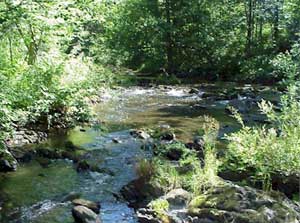
Guides, Factsheets, and Issue Profiles
 Buffer Handbook PDF format - A Guide to Creating Vegetated Buffers for Lakefront Properties (1998). This 20-page handbook provides information about landscaping your shoreline for lake protection and helps you get started on planning and planting your shoreline. This manual is available electronically, unfortunately it is no longer available in print.
Buffer Handbook PDF format - A Guide to Creating Vegetated Buffers for Lakefront Properties (1998). This 20-page handbook provides information about landscaping your shoreline for lake protection and helps you get started on planning and planting your shoreline. This manual is available electronically, unfortunately it is no longer available in print.
 Buffer Handbook Plant List PDF format - This 50-page publication contains a listing of and details about trees, shrubs, and groundcovers that could be used in planting or improving a buffer in Maine. Plant descriptions include scientific and common names, sun and soil requirements, plant hardiness zone, plant characteristics, and native status. This publication was updated in 2009 to include more native species and to remove species that are now known to be or suspected of being invasive. This manual is available electronically, unfortunately it is no longer available in print.
Buffer Handbook Plant List PDF format - This 50-page publication contains a listing of and details about trees, shrubs, and groundcovers that could be used in planting or improving a buffer in Maine. Plant descriptions include scientific and common names, sun and soil requirements, plant hardiness zone, plant characteristics, and native status. This publication was updated in 2009 to include more native species and to remove species that are now known to be or suspected of being invasive. This manual is available electronically, unfortunately it is no longer available in print.
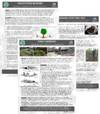 Conservation Practices for Homeowners - Series of 24 fact sheets from DEP and the Portland Water District profiling common conservation practices that homeowners can use to protect water quality. The fact sheets include detailed instructions, diagrams and color photos about installation and maintenance. (off-site)
Conservation Practices for Homeowners - Series of 24 fact sheets from DEP and the Portland Water District profiling common conservation practices that homeowners can use to protect water quality. The fact sheets include detailed instructions, diagrams and color photos about installation and maintenance. (off-site)
Gravel Road Maintenance Manual: A Guide for Landowners on Camp and Other Gravel Roads PDF format - This manual provides camp road owners, contractors, and others with information on maintaining and improving unpaved gravel roads. Includes troubleshooting guide, practical tools and detailed diagrams on ditching, crowning, road surface materials, and other road maintenance practices, as well as checklists and other guidance.
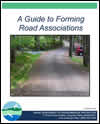 Guide to Forming Road Associations - This manual is intended as a resource for private road residents who would like to improve planning for and implementation of successful road maintenance programs.
Guide to Forming Road Associations - This manual is intended as a resource for private road residents who would like to improve planning for and implementation of successful road maintenance programs.
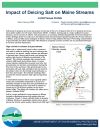 Impact of Deicing Salt on Maine Streams - This Issue Profile is a summary of Maine DEP findings about how salt use in developed areas has adversely impacted aquatic life in some streams in Maine, and provides some strategies to keep in mind to help address this issue.
Impact of Deicing Salt on Maine Streams - This Issue Profile is a summary of Maine DEP findings about how salt use in developed areas has adversely impacted aquatic life in some streams in Maine, and provides some strategies to keep in mind to help address this issue.
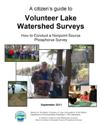 Lake Watershed Survey Manual - A Citizen's Guide to Volunteer Lake Watershed Surveys: How to Conduct a Nonpoint Source Phosphorus Survey (2011). This manual provides detailed steps for planning for and conducting a volunteer-led survey of the area that drains to a lake. Appendices include sample survey forms and outreach materials.
Lake Watershed Survey Manual - A Citizen's Guide to Volunteer Lake Watershed Surveys: How to Conduct a Nonpoint Source Phosphorus Survey (2011). This manual provides detailed steps for planning for and conducting a volunteer-led survey of the area that drains to a lake. Appendices include sample survey forms and outreach materials.
Lake Watershed Survey Manual (pdf) All Appendices (pdf)
 Septic System Inspection PDF format - Protect your investment by minimizing the risk of costly system replacement or repair. (pamphlet)
Septic System Inspection PDF format - Protect your investment by minimizing the risk of costly system replacement or repair. (pamphlet)
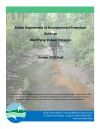 Stream Stressor Guide - This guide is designed for use by watershed management and water resource professionals. It provides information about stressors that can impair a stream's biological community and gives guidance on how to identify which stressors and causal pathways are impairing or threatening a stream. The objective is to insure that any plans to restore or protect a stream focus on the issues that are most important to the health of that particular stream.
Stream Stressor Guide - This guide is designed for use by watershed management and water resource professionals. It provides information about stressors that can impair a stream's biological community and gives guidance on how to identify which stressors and causal pathways are impairing or threatening a stream. The objective is to insure that any plans to restore or protect a stream focus on the issues that are most important to the health of that particular stream.
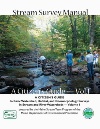 Stream Survey Manual - A citizen's guide to basic watershed, habitat, and geomorphology surveys in stream and river watersheds and a primer on stream ecology, water quality, hydrology, and fluvial geomorphology (2010).
Stream Survey Manual - A citizen's guide to basic watershed, habitat, and geomorphology surveys in stream and river watersheds and a primer on stream ecology, water quality, hydrology, and fluvial geomorphology (2010).
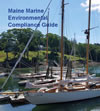 Maine Marine Environmental Compliance Guide - This manual is designed to help small and large marinas and boatyards maintain compliance with with environmental regulations in Maine.
Maine Marine Environmental Compliance Guide - This manual is designed to help small and large marinas and boatyards maintain compliance with with environmental regulations in Maine.
Best Practice Manuals
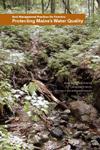 Best Management Practices for Forestry - (Maine Forest Service) Protecting Maine's water quality during forest harvests. This handbook is for woodlot owners, loggers, foresters, and others involved in harvest operations. The handbook will help you understand, identify, design, and implement water quality protection measures while meeting other harvest objectives.
Best Management Practices for Forestry - (Maine Forest Service) Protecting Maine's water quality during forest harvests. This handbook is for woodlot owners, loggers, foresters, and others involved in harvest operations. The handbook will help you understand, identify, design, and implement water quality protection measures while meeting other harvest objectives.
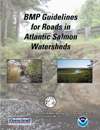 BMP Guidelines for Roads in Atlantic Salmon Watersheds - (Project Share, 2004) This guidance is for the design, placement, construction and permitting of roads, as well as the repair and maintenance of existing roads, that cross or parallel Maine Atlantic salmon rivers. These guidelines distill the most applicable elements of existing BMPs relative to Atlantic salmon habitat protection.
BMP Guidelines for Roads in Atlantic Salmon Watersheds - (Project Share, 2004) This guidance is for the design, placement, construction and permitting of roads, as well as the repair and maintenance of existing roads, that cross or parallel Maine Atlantic salmon rivers. These guidelines distill the most applicable elements of existing BMPs relative to Atlantic salmon habitat protection.
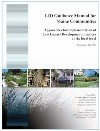 LID Guidance Manual for Maine Communities PDF format - Approaches for Implementation of Low Impact Development at the local level (2007). The purpose of this guidance manual is to help municipalities implement Low Impact Development (LID) practices on small, locally permitted development projects. This manual provides a recommended set of LID standards and guidance on implementing LID practices to comply with those standards.
LID Guidance Manual for Maine Communities PDF format - Approaches for Implementation of Low Impact Development at the local level (2007). The purpose of this guidance manual is to help municipalities implement Low Impact Development (LID) practices on small, locally permitted development projects. This manual provides a recommended set of LID standards and guidance on implementing LID practices to comply with those standards.
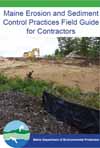 Erosion and Sediment Control BMPs - The purpose of this handbook is to help land development consultants and contractors incorporate urban Best Management Practices (BMPs) for erosion and sedimentation control into project design, planning, and construction. This compilation of BMPs provides a menu from which project designers and contractors may choose the practices appropriate to specific projects and sites. There are 2 manuals available: a field manual for contractors and a design manual for engineers and designers.
Erosion and Sediment Control BMPs - The purpose of this handbook is to help land development consultants and contractors incorporate urban Best Management Practices (BMPs) for erosion and sedimentation control into project design, planning, and construction. This compilation of BMPs provides a menu from which project designers and contractors may choose the practices appropriate to specific projects and sites. There are 2 manuals available: a field manual for contractors and a design manual for engineers and designers.
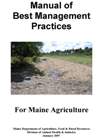 Manual of Best Management Practices for Maine Agriculture (Maine Dept of Agriculture 2007) A comprehensive compilation of agriculture-related best management practices for farms in Maine.
Manual of Best Management Practices for Maine Agriculture (Maine Dept of Agriculture 2007) A comprehensive compilation of agriculture-related best management practices for farms in Maine.
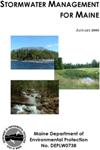 Stormwater Best Practices Manual - The Maine Stormwater Best Management Practices Manual includes three volumes: the Stormwater Management Manual; Phosphorus Control in Lake Watersheds: A Technical Guide to Evaluating New Development; and BMP Technical Design Manual.
Stormwater Best Practices Manual - The Maine Stormwater Best Management Practices Manual includes three volumes: the Stormwater Management Manual; Phosphorus Control in Lake Watersheds: A Technical Guide to Evaluating New Development; and BMP Technical Design Manual.